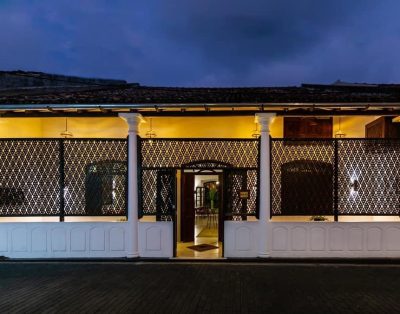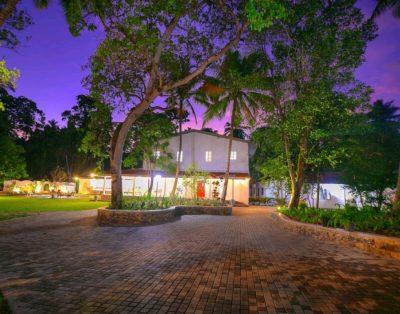Art and Travel: The World Renowned Sigiriya Frescoes
Welcome to the paradise island of Sri Lanka where we have been exploring a trail of art in various forms spanning the ages. From the fascinating rock paintings and engravings of pre-historic times we move forward to the 5th century A.D where an intriguing story of murder, deceit as well as artistic brilliance was about to take place.
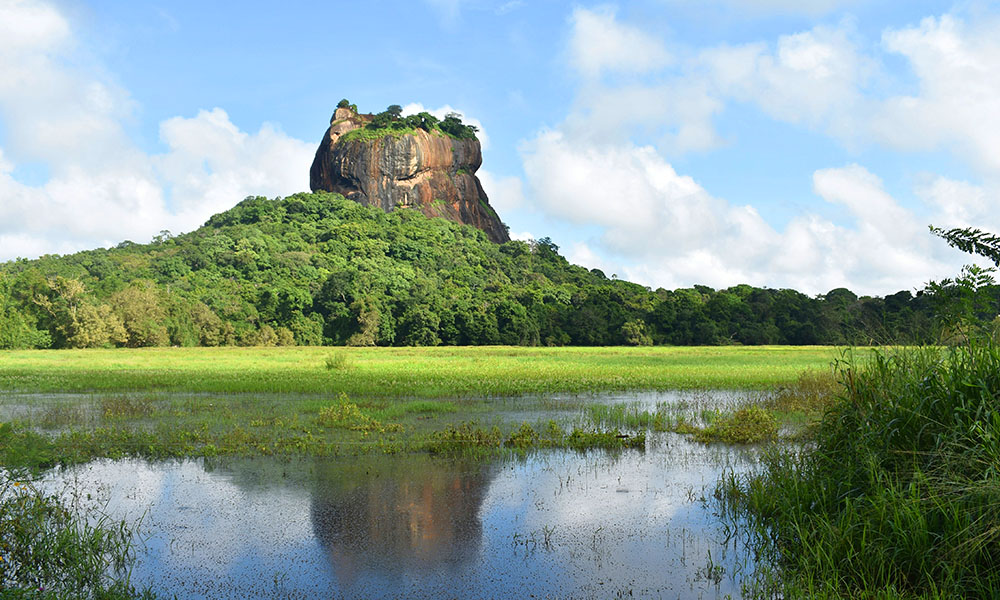
Kassapa was born to a non-royal consort of King Dhatusena and coveted his father’s throne for himself. In 477 A.D. Kassapa killed his father and with the help of the army commander Migara, staged a coup to oust the rightful heir to the throne, who was named Mogallana. Kassapa seized the throne and Mogallana fled to South India vowing revenge. Fearing Mogallana’s vengeance, King Kassapa moved the capital of the island from Anuradhapura to a 200-meter-high rock fortress which came to be known as Sigiriya (Lion’s Rock).

An architectural marvel and a wonderous example of city planning, Sigiriya holds importance for all and any who’s interests are formed from the fields of art, architecture, history as well as nature. On the base of the rock was sculpted massive paws of a lion while bricks formed its head and on the top of the rock was erected an elegant palace, amidst a garden and cistern, affording 360-degree view of the surrounding landscape. Around the rock was a terraced palace garden, containing water fountain features as well as a moat. Declared a UNESCO world heritage in 1982, Sigiriya still holds many a mystery to be uncovered.

Sigiriya is an important stop on our art trail given the glamorously sensuous paintings of feminine beauty which have been perfectly preserved over time on the western face of the rock. Located in a rock pocket above the Lion’s plateau are a number of paintings of women, some of a golden completion whilst others feature in a darker shade. These lovely ladies are painted in isolation or in pairs and seem to be rising from or floating amongst clouds, thereby being called “the cloud damsels”. Striking diversity of personality, face, body, clothing as well as make – up is depicted with many a flower adorning their hair and filling the baskets they carry in their hands. Painted in the tempera technique, pigments of red, yellow, and brown features heavily in colors used. There are also splashes of green here and there which were proven to have been added later.
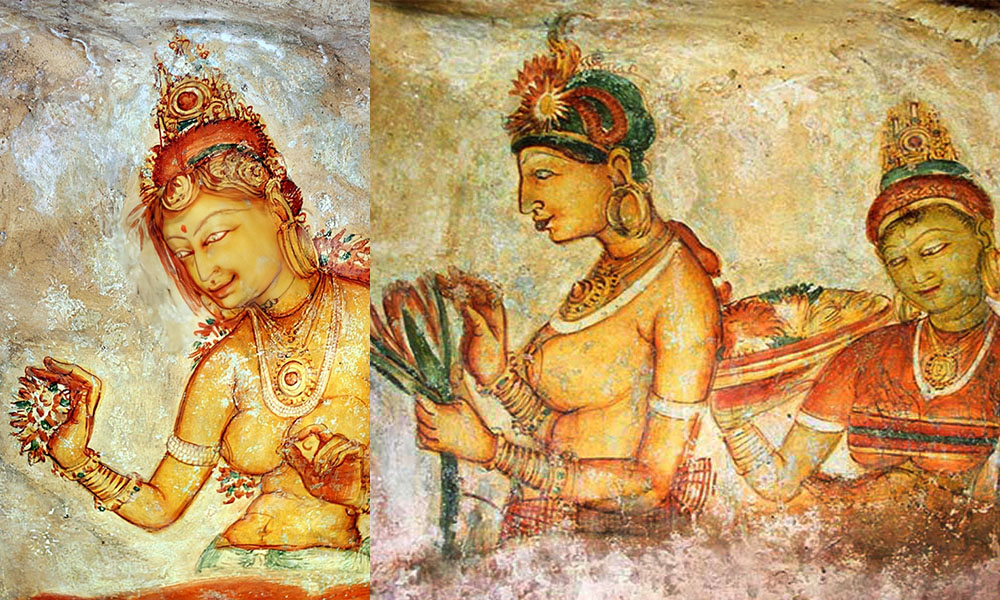
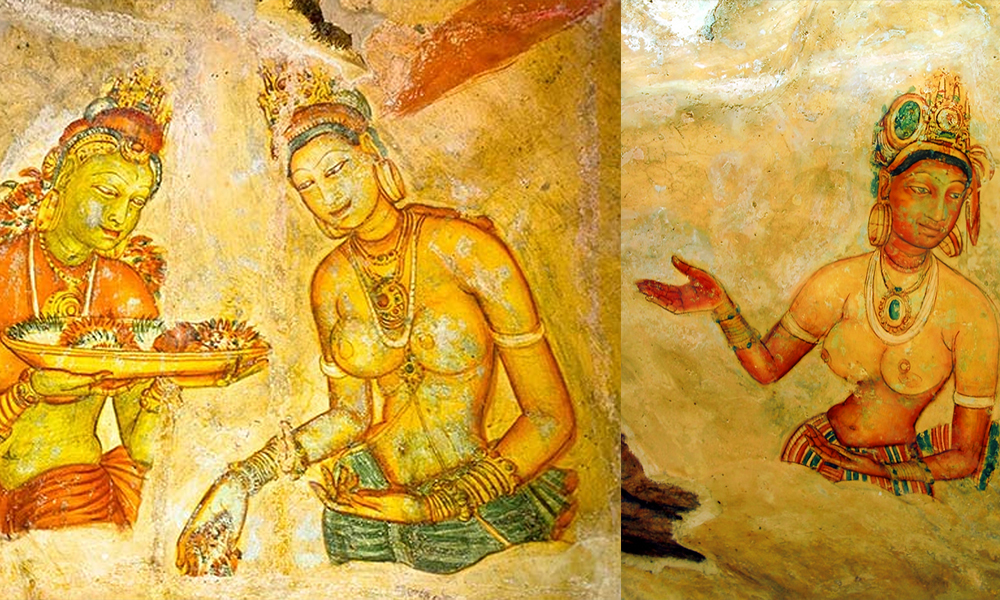
Many theories have been formed on who these women really are. One popular theory is that the dark complexioned ladies represented cloud damsels (mega latha) and the golden complexioned represent lightning princesses ( viju kumari ). Another, states that the dark-complexioned ladies to be of a different race to the fairer ladies and they all seem to be moving in the same direction (north) with flowers in their hands and therefore that they might be visiting the Pidurangala temple located just a mile north of Sigiriya. Also, it is said that the fairer ladies are queens or princesses while the darker ladies are ladies-in-waiting or maid servants. Regardless, of who these ladies represent, many a visitor to Sigiriya has been enamored by them; so much so that they have left verses of the graffiti on the “Mirror Wall” of Sigiriya paying homage to their beauty and grace. It is in one of these graffiti lines that it was said that 500 such paintings used to adorn the western face of Sigiriya forming a picture gallery of large proportions. Sadly, most of which has been lost over time and a precious few remain preserved in the rock pocket.
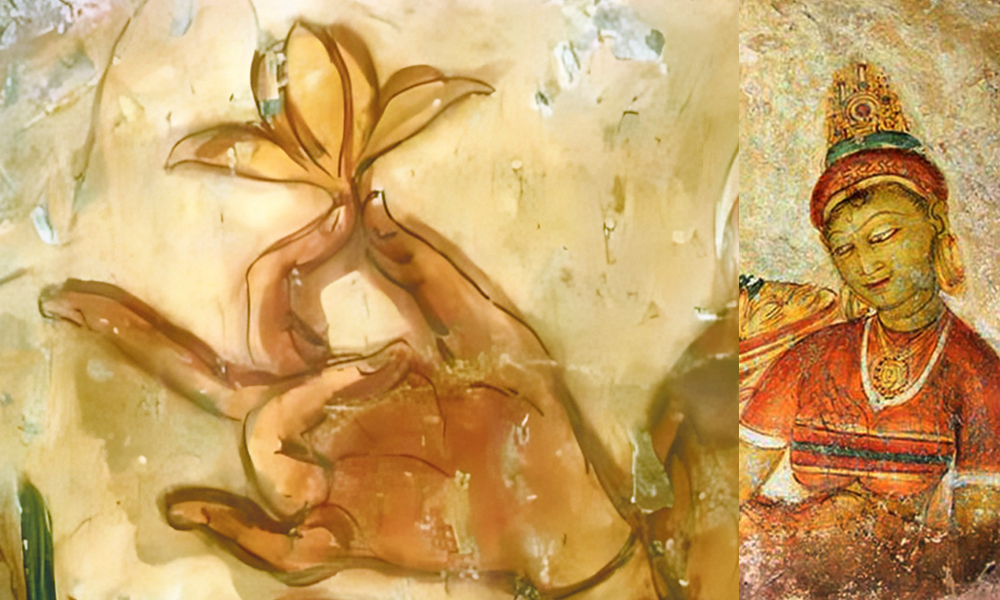
As you explore Sigiriya Rock Fortress and gaze upon these mesmerizing beauties, you are stepping back in time and connecting with the legacy of ancient Sri Lankans who used their talents to leave an indelible mark on history. The Sigirya Frescoes continue to captivate visitors, serving as a bridge between past and present, and reminding us of the enduring power of human creativity.




